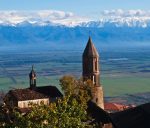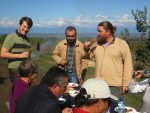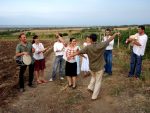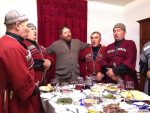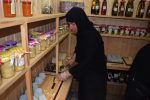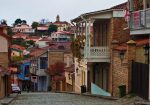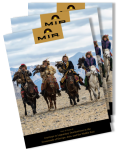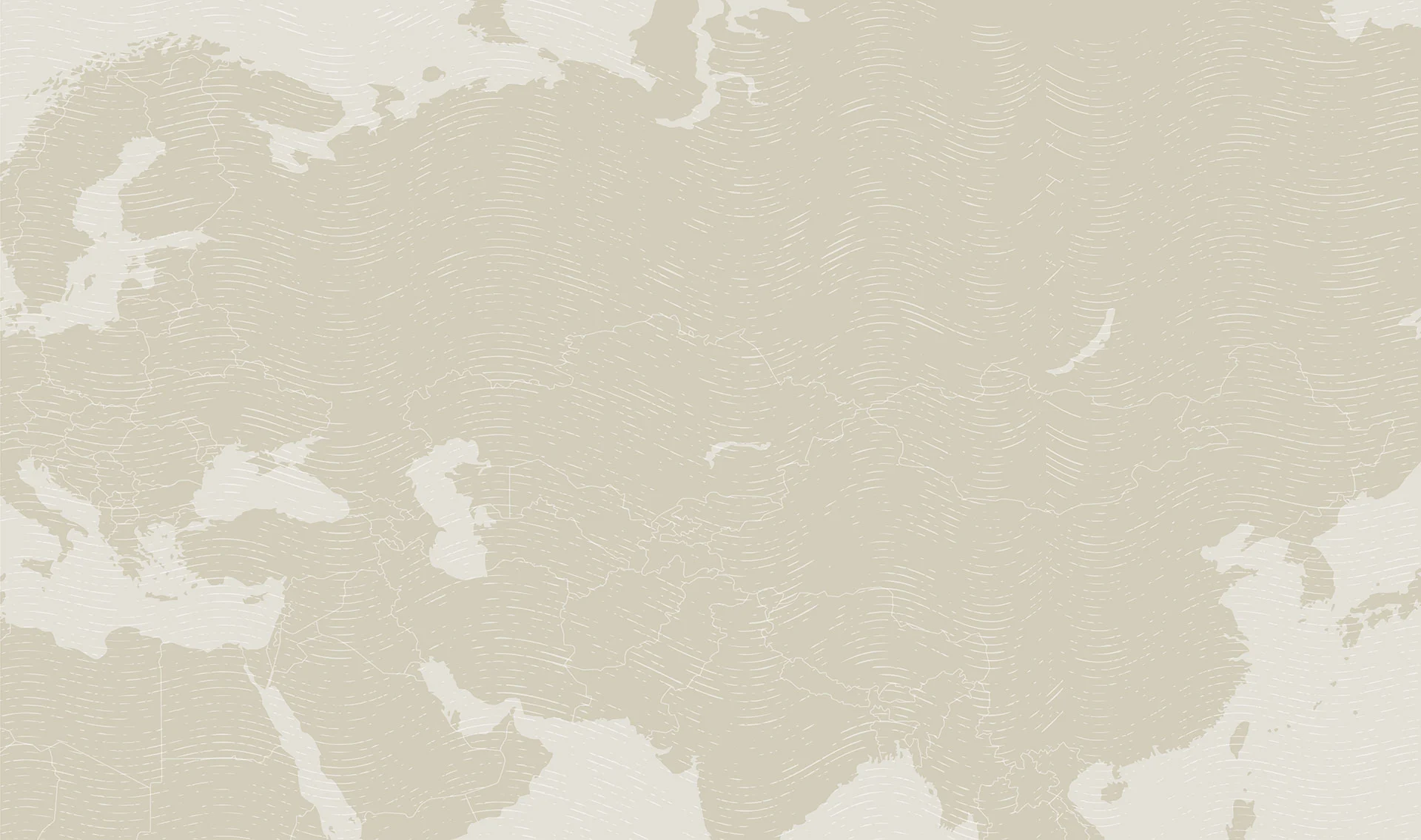A Taste of Georgia: Wine, Cuisine & Culture
Photo credit: Ia Tabagari
Discovering Georgia’s Village Hospitality
Overview
International travelers are discovering what residents of the South Caucasus region have long known: Georgian food and wine are out-of-this-world good. This tour takes you to the places where Georgia’s extraordinary flavors shine brightest: in the vineyards, restaurants, and family tables where the country’s most accomplished winemakers and chefs ply their crafts. Along the way you’ll get to know the hip, historic capital city of Tbilisi, explore picturesque mountains dotted with centuries-old villages and monasteries, and discover firsthand why Georgians are famous for their hospitality.
Travels to: Georgia
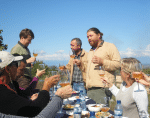
Map

Itinerary
-
Days 1-2: Tbilisi (Georgia)

Start your Georgian experience by getting to know hip, picturesque Tbilisi, the country’s capital and by far its largest city. A day of touring includes wandering the narrow streets of the red-roofed Old Town; a stroll down broad Rustaveli Avenue, Tbilisi’s main thoroughfare; and exploration of artsy neighborhoods and local haunts. You’ll then go underground to a cellar wine bar to sample a cross-section of Georgian wines. Dinner is a supra, a traditional feast with dozens of dishes and a tamada (toastmaster) leading the festivities.
HIGHLIGHTS
- Landmarks in and around Tbilisi, including the 4th century Narikala Fortress, the hillside Mother Georgia monument, and the elaborately carved balconies of the Old Town
- A thorough introduction to Georgian wine, with tastings
- A supra – a traditional feast – showing off Georgia’s splendid cuisine and unstinting hospitality
-
Days 3-5: Signagi, Qedeli, Tibaani

Discover Georgia’s wine country, Kakheti, learning all about qvevri, the huge earthenware vessels used for making Georgian wines. Near Signagi, take a walking tour of renowned vineyards producing organic wines from regional grapes. Explore authentic local markets in small country villages, meet a local silk producer, and taste one of Georgia’s few ‘nano-brews’ – locally produced beer at its rustic ranch brewery; and of course continue indulging in exceptional meals.
HIGHLIGHTS
- Touring and tasting at Pheasant’s Tears Winery
- The narrow streets and intricate wooden balconies of the hill town of Signagi
- A performance of traditional songs in a centuries-old polyphonic style that developed independent of European rules of harmony
-
Days 6-11: Kazbegi, Gori, Akhaltsikhe, Vardzia, Tbilisi

Take the Georgian Military Highway to mountainous Kazbegi, learning how to make khinkali, Georgia’s signature dumplings, in a village home. Connect with Georgia’s past at UNESCO-listed Mtskheta, early capital of the kingdom of Iberia, learn about Georgia’s most notorious son, Joseph Stalin, in his hometown, and delight your palate with Meskhetian regional cuisine.
Overnight at a perfectly located resort in the valley below 12th century Vardzia cave monastery. Explore the caves and breath the fresh countryside air deeply, before returning to Tbilisi to end your culinary adventure.
HIGHLIGHTS
- Ninth century Sapara Monastery
- Akhaltsikhe’s Old Town and castle/fortress
- Exploring the network of hundreds of caves that make up Vardzia
Dates & Prices
Small group tour – max 12 travelers
Land tour price, per person. Based on double occupancy and minimum group size of 6 travelers.
-
2025 Dates
Sept 24 - Oct 4Updated program for 2025!Tour, double occupancy$4,495Single supplement$795
-
2026 Dates
Sept 23 - Oct 3Tour, double occupancy$4,695Single supplement$825
What's Included
-
Tour Includes
- Accommodations, as noted in the itinerary.
- Most meals, as noted in the itinerary: 11 breakfasts, 9 lunches and 5 dinners.
- Restaurant tips for included meals.
- Services of experienced, English-speaking local guides, drivers and other staff, including a MIR Tour Manager.
- Arrival/departure airport transfers. MIR will arrange for all travelers to be met on arrival and seen off on departure whether we make your airfare arrangements or not, provided you arrive and depart on the tour start/end dates in the tour start/end cities.
- Ground transportation throughout itinerary by private coach or minibus (size of vehicle depends on group size).
- Guided sightseeing tours and entrance fees as outlined in itinerary.
- Special events, excursions and cultural performances per the itinerary.
- Baggage handling where available.
- Gratuities to local guides, drivers, porters and other service personnel.
- Assistance booking your custom flight arrangements (on request; please note that international air fare is not included in the land tour cost).
- Complete pre-departure electronic document that includes detailed packing suggestions, reading list links, country-specific information, maps, travel tips and more.
- Electronic final update bulletin, with any late news, updates and important information.
-
Not Included
- Internal airfare (internal airfare is quoted separately and is subject to change by airlines).
- International airfare or taxes/fuel surcharges.
- Meals not specified as included in the itinerary.
- Alcoholic beverages, except as noted.
- Single supplement charge, if requested or required.
- Items of a personal nature (phone calls, email, laundry, alcohol, excess baggage, etc).
- Gratuities to Tour Manager.
- Expenses incurred as a result of delay, modification or extension of a tour due to causes beyond MIR’s control.
- Visa fees, if required (Note: no visas are required for U.S. passport holders).
- Travel and trip cancellation insurance.
Activity Level
-
Level 3: Medium
Level 3: Medium
This small group tour features long days walking and standing while touring, a large amount of stair climbing with some steep steps, and several long overland drives sometimes on poor quality roads. Only those fit to travel and who are willing to accept local standards of amenities and services and the physical challenges of the program should consider joining this program.
Travelers must be able to walk one to two miles a day, keeping up with fellow travelers, often on uneven surfaces.
There are overall shortcomings in the tourism infrastructure of these developing destinations, including some that can cause walking challenges such as unpaved sidewalks, uneven surfaces and steps, packed-dirt streets, broken pavement (streets or sidewalks), and a general absence of handrails or ramps. Some attractions are only accessible via steep staircases with tall uneven steps – in some cases, stairways are in narrow passages with limited light. Elevators are not available at touring sights, nor at some of the hotels.
Past travelers have also encountered challenges with plumbing, bureaucratic service, and availability and quality of public restrooms.
Accommodations vary from four star properties to relatively basic and simple hotels in the more remote parts of the countryside.

